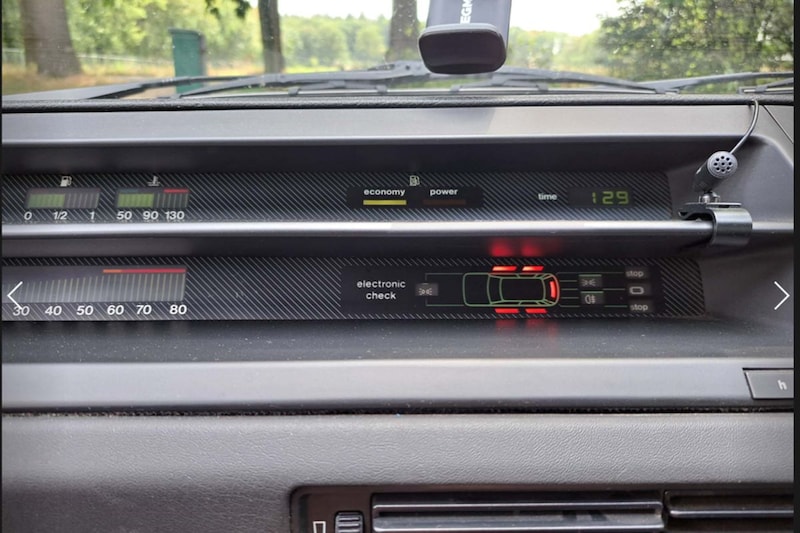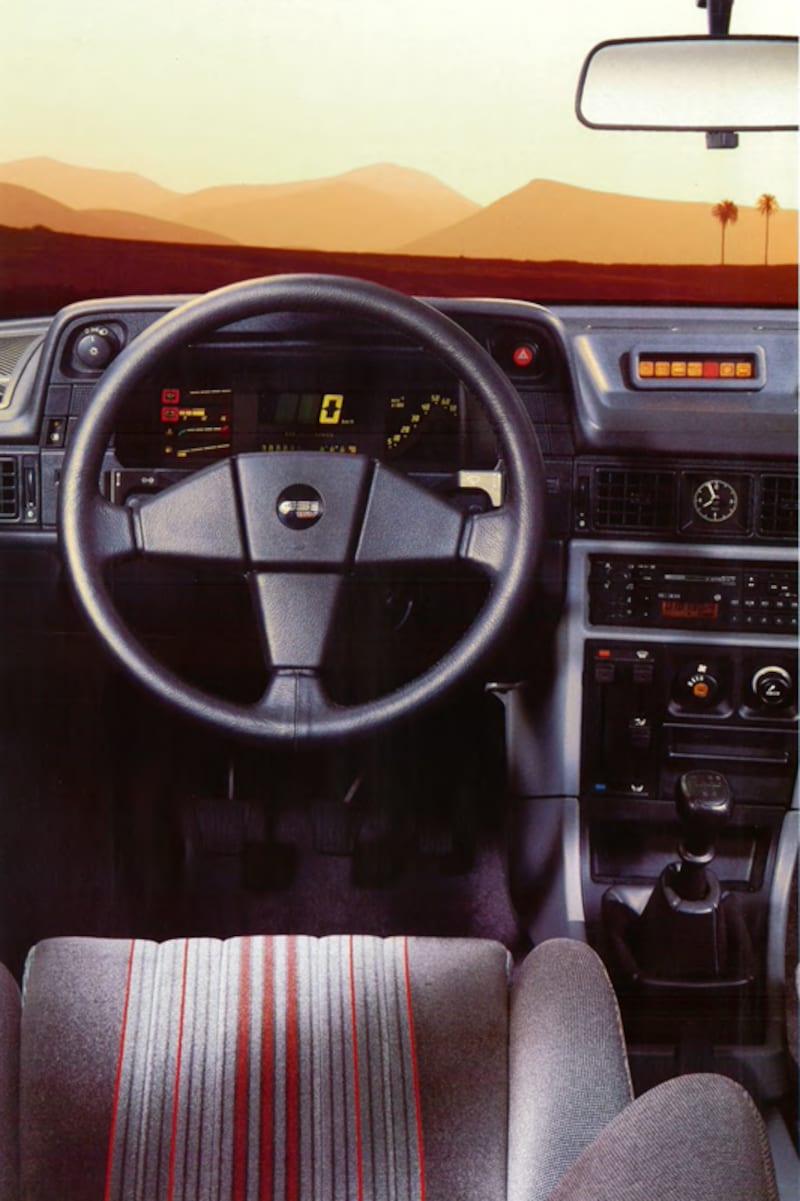Prelude to the touchscreen in the car


More and more often we see a digital screen in the instrumentation taking the place of the familiar analog dials. Sometimes a dial is projected on that screen, as if nothing actually changes, but often we only see numbers or dashes that have taken the function of speedometer, tachometer or fuel gauge. Nicely contemporary. Would you think yes; but for decades the digital dashboard has been thought to be contemporary.
Experiments are underway in various laboratories around the globe with diodes, cathodes, electron tubes and other technologies to display signals. This leads, among other things, to the display technology that is widely used in the screens of, for example, video recorders and household appliances. However, implementation in a car requires a rather radical turnaround. To start with, it is necessary to switch from mechanical to electronic and in addition, it must be implemented in the dashboard. In short, it’s not just about the availability of the display itself.

In the mid-1970s, Aston Martin is working on a completely new limousine, the Lagonda Series 2 as a successor to the somewhat aging Lagonda Series 1. Designer William Towns is given all the freedom to create something radically different. Not only the appearance with its low, wedge shape breaks with what we are used to, the interior is also completely different. When the car is presented in 1976, the dashboard consists of clean surfaces and lacks round counters and clocks with classic dials.

The instrumentation consists of fluorescent displays. To complete the futurism, the steering column is flanked by panels with touch buttons. When the press was allowed to get acquainted with the car in 1977, the demonstration models were temporarily equipped with analog clocks, to prevent problems. However, it takes until 1978 before the car is ready for production, not least to be able to further develop the dashboard. In 1984 the dashboard is revised and the car gets three cathode ray tubes (or picture tubes), which in turn are replaced in 1986 by LCD technology. The touch buttons have now made way for ‘ordinary’ push buttons.

For the people
Several car manufacturers are curious about the Lagonda dashboard. In 1980 Pininfarina shows a concept, the Ferrari Pinin, with screens from instrumentation giant Veglia. However, it does not come from production. Nevertheless, futurism is spreading in the car industry. General Motors offers the Cadillac Trip Computer from 1978 as an option for the Seville and Eldorado. However, they remain exclusive toys for a long time.

The general public did not become acquainted with the digital dashboard until 1983 with cars such as the Renault 11 Electronic (photo 2) and the MG Maestro. Cars such as the Citroën BX Digit (photo 4), the Subaru XT and the Fiat Tipo DGT (photo 3) followed later. It is a prelude to the first touchscreen cars, in 1986 in the Oldsmobile Toronado and the related Buicks Riviera and Reatta. And while we’re at Oldsmobile: in 1988 the Cutlass Supreme is the first with a head up display.

.
– Thanks for information from Autoweek.nl





